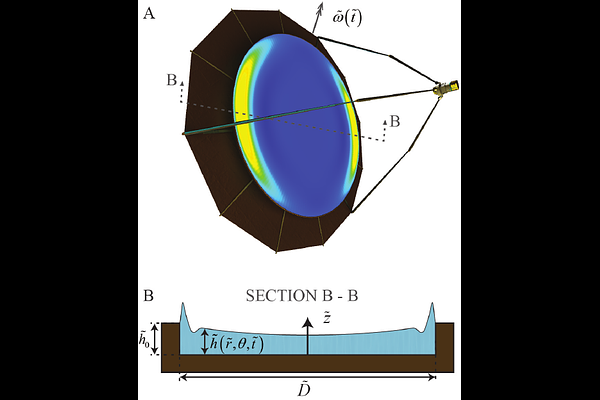Fluid dynamics of a liquid mirror space telescope

Fluid dynamics of a liquid mirror space telescope
Israel Gabay, Omer Luria, Edward Balaban, Amir D. Gat, Moran Bercovici
AbstractLarge aperture telescopes are pivotal for exploring the universe, yet even with state-of-the-art manufacturing and launch technology, their size is limited to several meters. As we aim to build larger telescopes - extending tens of meters - designs in which the main mirror is based on liquid deployment in space are emerging as promising candidates. However, alongside their enormous potential advantages, liquid-based surfaces present new challenges in material science, mechanics, and fluid dynamics. One of the fundamental questions is whether it is possible for such surfaces to maintain their precise optical shape over long durations, and in particular under the forces induced by the telescope's accelerations. In this paper, we present a model and a closed-form analytical solution for the non-self-adjoint problem of the dynamics of a thin liquid film pinned within a finite circular domain. We use the 50-meter Fluidic Telescope (FLUTE) concept as the case study, and examine the liquid dynamics of the telescope under both slewing actuation and relaxation regimes, elucidating the role of geometrical parameters and liquid properties. The solutions reveal a maneuvering 'budget' wherein the degradation of the mirror surface is directly linked to the choice of maneuvers and their sequence. By simulating ten years of typical operation, we show that, while the maximal deformation might reach several microns, the spatial distribution of the deformation and their propagation rate allows the telescope to maintain its optical functionality for years, with at least a substantial portion of the aperture remaining suitable for astronomical observations. The model provides valuable insights and guidelines into the performance of liquid-film space telescopes, marking a crucial step toward realizing the potential of this innovative concept.